Without land and citizenship
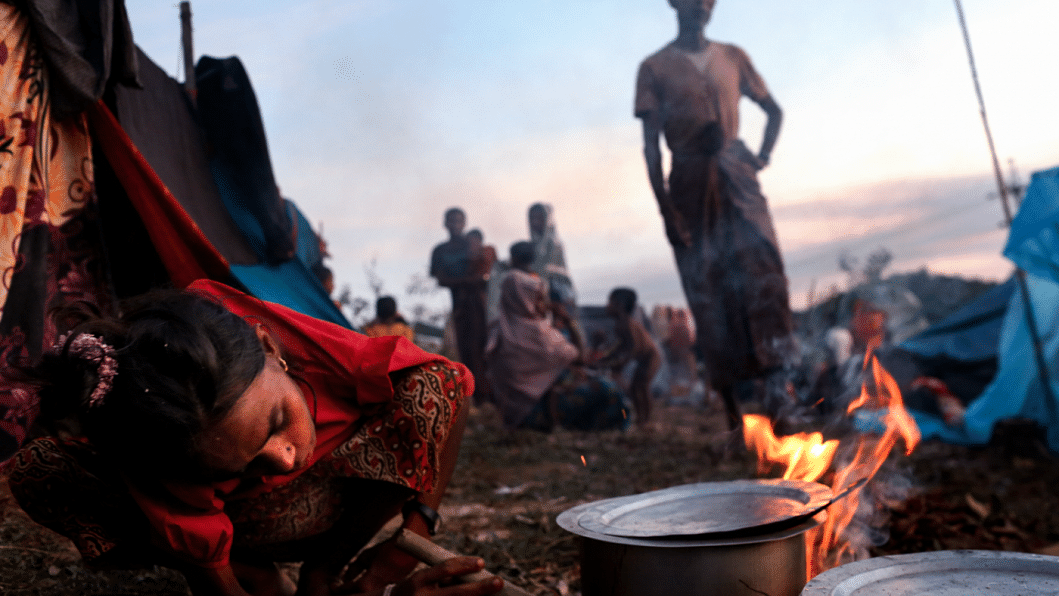
There has been widespread exodus of refugees from the different states and divisions of Myanmar to countries of the surrounding region, including Thailand, Malaysia, Indonesia, India and Bangladesh. The expulsion of refugees has been propelled by a complex set of factors, varying between different conflict zones in Burma characterised by particular ethno-religious and socio-demographic fault lines.
The Rohingyas constitute a Muslim minority living among the ethnically distinct Buddhist Rakhines in north Rakhine (Arakan) state of Myanmar, which lies along the international border with Bangladesh. Their darker skin colour compared to most of the Burmese population has provided scope for racist attitudes and discrimination (cf. Lunn 2012:11-13). The Rohingya were denied citizenship of Myanmar by a law enacted by its military government, effectively reducing their status to that of a stateless group. They were denied "the right to own land or property", amounting to a total land grab and subjected to many forms of discrimination in their everyday existence (COHRE 2007: 82). The Rohingyas were exposed to forced labour and routine violence including rape and killings, and also required to get permission for even matters concerning their personal lives such as getting married (Lewa 2011:ii).
In addition to routine persecution and ethnic discrimination, intensified repression by the Burmese military state led to successive waves of Rohingya refugees fleeing to neighbouring Bangladesh.
The area where Rohingya refugees from Myanmar cross the international border to enter Bangladesh is the Cox's Bazar district. Even though some of the refugees have moved on to other areas, their highest concentration continues to be in Cox's Bazar. It is also one of the poorest and least developed districts of Bangladesh, such that large sections of the local (host) community are not much better off than the destitute refugees. The coastal plains, forests and hill ecosystems of Cox's Bazar have been under increasing stress due to the high population density and extractive activities of its own local communities.
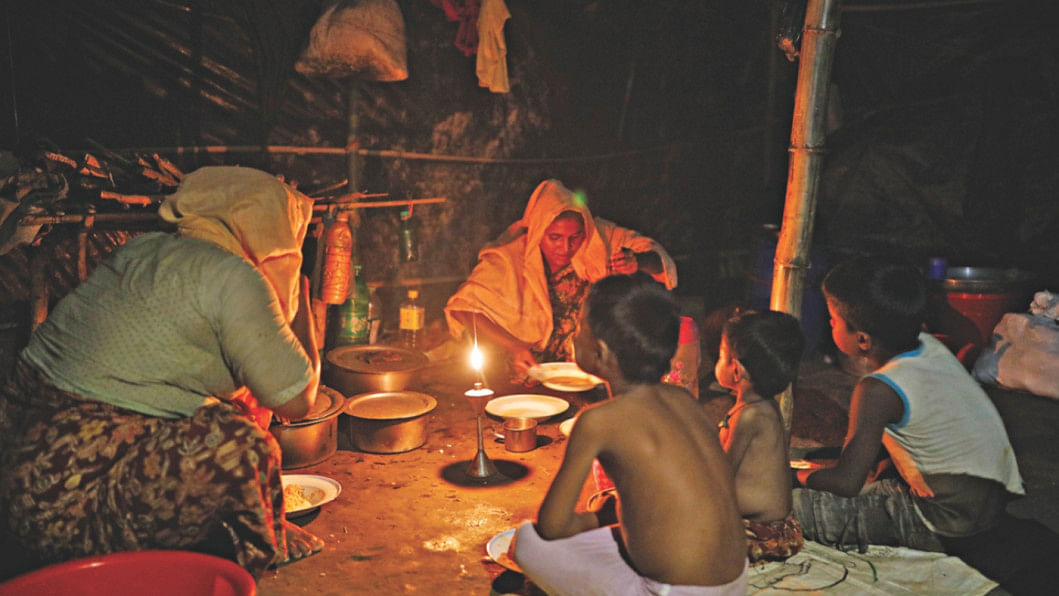
In parallel, the Cox's Bazar region has been significantly influenced by neoliberal globalisation. The small seaport of Cox's Bazar is the premier tourist resort of Bangladesh, constituting a major site of investment and speculation in urban real estate. Capitalisation of the rural interior by real estate developers and foreign and domestic corporations has grown rapidly to cover the entire coastal belt, with land being increasingly transformed into a financial asset for speculative gains (McMichael 2013:10).
The policies of Bangladesh, a Muslim-majority country, towards successive waves of Muslim Rohingya refugees have changed since the 1970s. After an initial phase of welcoming the Rohingyas due to religious and cultural affinity, the Bangladeshi state was unable and unwilling to take on the burden of harbouring and feeding the increasing numbers on its own. Attempts at forced repatriation (refoulment) have not been very effective because such returnees have faced persecution in Myanmar and fled to Bangladesh yet again (Lewa 2011). Even though they have left behind their lands and livelihoods, returning home is not an option for most Rohingya refugees in Cox's Bazar.
Furthermore, Rohingyas who have entered Bangladesh after 1992 have not been formally given refugee status by the government, even though international law and practices would regard them as refugees irrespective of their official status (WFP & UNHCR 2012:ix). The lack of formal status as registered refugees made such Rohingyas vulnerable to abuse and arbitrary deportation without any legal recourse. In any case, all refugees in Bangladesh were subject to considerable "protection risks" in terms of violence and extortion in the places where they stayed as well as when travelling, as indicated below.
Formerly the Rohingya refugees had been mostly peasants in Myanmar, differentiated in terms of their wealth and class status. After arriving in Bangladesh, they were all levelled in terms of the common predicament of meeting basic food needs, irrespective of their earlier status and economic conditions. While their access to food was a matter of sheer survival, they were denied any entitlements based on citizenship rights and ownership of land. Furthermore, the Bangladesh government did not formally allow the Rohingya refugees to seek avenues of survival through employment, or access any of the welfare facilities provided by the state.
Given this context, the ways in which the Rohingyas accessed food depended crucially upon their status as registered or unregistered refugees and the sites in which they were located, ranging from official and unofficial camps to settlements of the local population. On this basis, the refugees can be divided into three categories, whose numbers have fluctuated over time with changing circumstances (Lewa 2011):
First, there are an estimated 24,500 registered refugees currently living in two official camps in Nayapara and Kutupalong, run by the government under the auspices of the UN Refugee Agency, UNHCR (Category A).
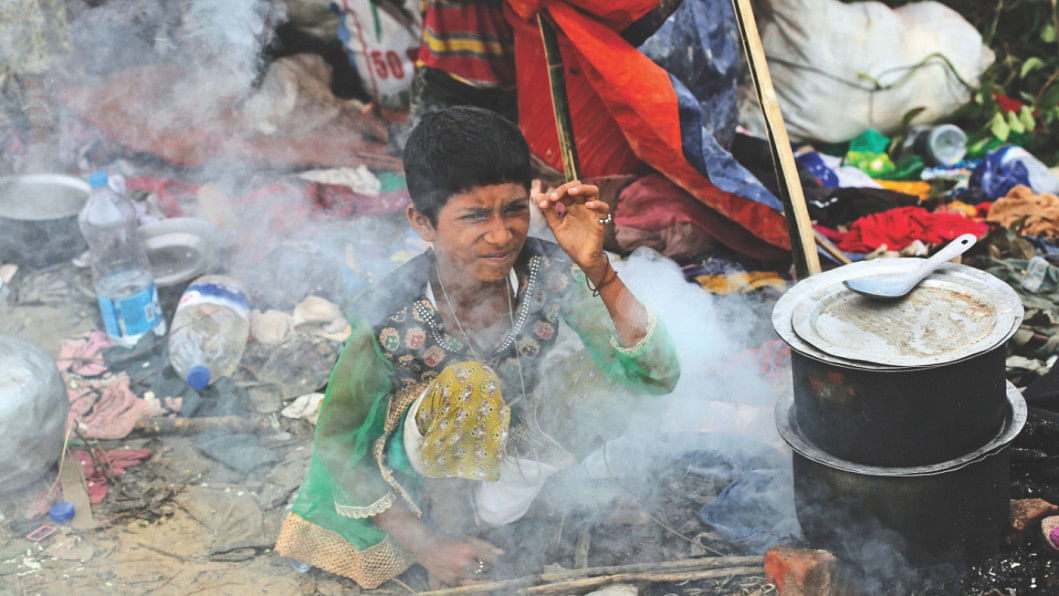
Second, there are two other unofficial "makeshift" sites in Kutupalong and Leda with unregistered refugees (Category B). The Kutupalong makeshift site had 20,500 unregistered Rohingyas in December 2010 (Lewa 2011:1).
Third, unregistered Rohingyas are dispersed among the local (host) population in the villages and towns of Cox's Bazar as well as adjoining districts, particularly Bandarban and Chittagong (Category C). Estimates of their total numbers range from 200,000 to 400,000, and they constitute the overwhelming majority of the Rohingya refugees in Bangladesh (Lewa 2011:44).
"Rohingya refugees were not legally allowed to engage in economic activities in Bangladesh and those living in official camps were not formally permitted to leave and travel without permission. Such restrictions left them with little choice but to break the law and pursue "illegal" options for pursuing food security and long term livelihood opportunities.
Among these, only Category A consisting of registered refugees in official camps received food from international aid agencies, administered by the government. The unregistered refugees in Categories B and C did not receive food assistance from international agencies. While both groups were left to fend for themselves, Categories B and C survived under very different circumstances, leading to contrasting outcomes.
The key determinants of the outcomes in terms of food security and dietary diversity were the economic activities and relationships that were feasible for these different groups of refugees.
Not surprisingly, registered refugees (Category A) had greater diversity in their food items compared to the unregistered ones in the makeshift sites (Category B), who had higher malnutrition rates. "Food assistance contributed directly to this dietary diversity, because rations could be sold, shared or exchanged" and also used for obtaining loans to buy other food items (WFP & UNHCR 2012: xix).
The unregistered Rohingyas in the makeshift campsites (Category B) were the most food-insecure and the most vulnerable in terms of protection risks among all refugee groups (WFP & UNHCR 2012: xxi). Their high concentration in a small area, where they outnumbered the local population and contributed to the degradation of common resources through deforestation, overfishing, and pollution of water sources resulted in their lack of protection and food security.
It is striking that the unregistered refugees who had assimilated with local communities (Category C) had more diversified diets compared to even the registered refugees receiving official food rations (Category A) (WFP & UNHCR 2012: xviii-xix). Moreover, "Almost twice as many Rohingyas living in local communities had four or more food groups in their diets than did unregistered Rohingyas in makeshift sites" (Category B) (WFP & UNHCR 2012: xviii). This suggests that refugees branching out on their own and finding avenues of survival in the local economy and society had been able to access better food security and informal protection systems compared to those living in the official camps and makeshift sites. Despite having no legal status in Bangladesh, they (Category C) came "closest to the goal of self-reliance", displaying greater range of livelihood strategies and spatial movements among all refugee groups. Such self-created food security attained by refugees assimilating with local communities is suggestive of a different formulation of food sovereignty that is more appropriate to the circumstances faced by such marginal groups without land and citizenship.
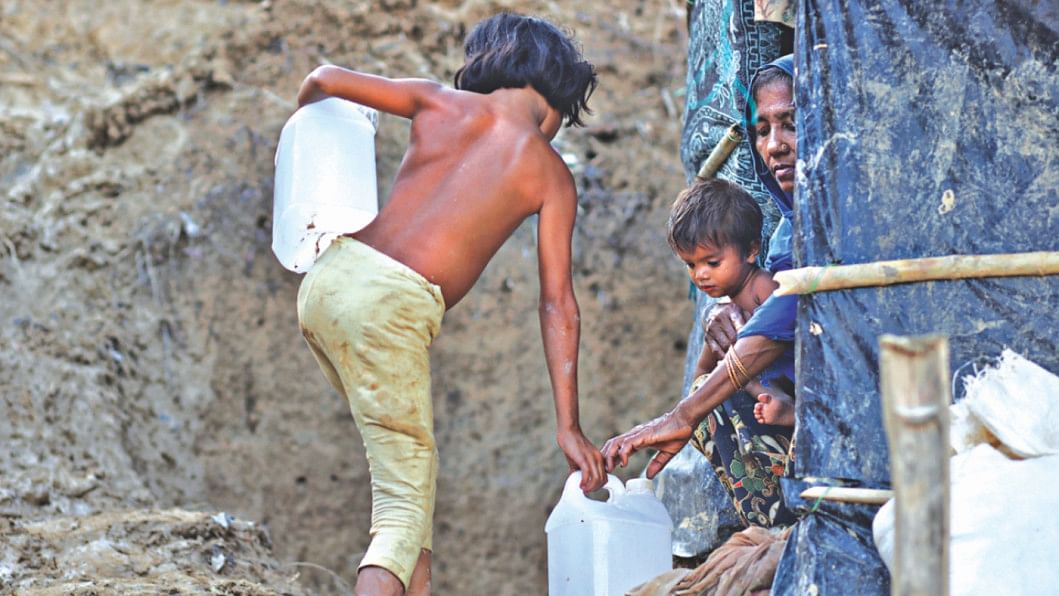
Rohingya refugees were not legally allowed to engage in economic activities in Bangladesh and those living in official camps were not formally permitted to leave and travel without permission. Such restrictions left them with little choice but to break the law and pursue "illegal" options for pursuing food security and long term livelihood opportunities. While such strategies have enabled the refugees to access food by earning from the local economy, they have been necessarily exposed to a whole range of protection risks from law enforcing agencies, local powerholders and criminal elements.
Attempts by the refugees to ensure their own food security have been facilitated by their skillful use of ties of kinship, community and patronage. Rohingyas who had marriage ties with Bangladeshi families received food, shelter and physical protection from their relatives, as well as help in finding employment. Established Rohingya refugees who had arrived earlier provided similar help to new arrivals from Myanmar, indicative of processes of "migrant community formation" and chain migration. Furthermore, Rohingyas entered into clientelist relationships with local powerholders, elite groups, community leaders and other gatekeepers, enabling them to earn and receive protection against possible deportation. Not least, the refugees made themselves indispensable in the local labour market, while also becoming unintended recruits or victims of trafficking networks. These varied roles of the Rohingyas activated powerful political and economic interests favouring their continued entry and residence in Bangladesh.
Given the lack of food rations and formal protection from the state, Rohingya refugees in Bangladesh have attempted to ensure their livelihoods and food security through a number of strategies. They have accepted low wages and returns to make their presence profitable to their employers, land owners and patrons. At the same time they have become clients of local powerholders for protection. They have got themselves enrolled in the voting lists to gain formal documentation of their right to stay in Bangladesh. They have spread out from the Cox's Bazar area adjoining the Burmese border to more distant and safer parts of Bangladesh where they can assimilate into the population without being conspicuously bracketed as foreign refugees.
While such strategies have worked up to a point, these have been constrained by the systematic exclusion of the Rohingyas from the electoral roll during 2007-09 and the growth of resentment against them among local groups threatened by their competition in the form of lower wages and cheaper goods and services. Given limited stocks of farming lands, fishing areas and forests, the Rohingyas have also competed with the local population for access to these scarce natural resources. The combination of these multiple factors unavoidably triggered social and economic conflicts and political opposition to the refugees among affected sections of the local population. Anti-Rohingya movements during 2010 have specifically targetted those economic activities and assets that have provided them with food security and protection from deportation, calling for the cancellation of their access to land and the labour market.
References
1. COHRE (Centre on Housing Rights and Evictions) 2007. Displacement and Dispossession: Forced Migration and Land Rights in Burma. Geneva: COHRE, (Country Report).
2. Lewa, Chris 2011. Unregistered Rohingya Refugees and the Kutupalong Makeshift Site. Dhaka: Canadian High Commission.
3. Lunn, Jon 2012. Burma: Recent Political and Security Developments. London: House of Commons Library.International Affairs and Defence Section. Standard Note: SN06474. 16 November.
4. McMichael, Philip 2013. Historicizing Food Sovereignty: a Food Regime Perspective. Paper for discussion at International Conference on Food Sovereignty: A critical Dialogue at Yale University, 14-15 September 2013.
5. WFP & UNHCR 2012. The contribution of food assistance to durable solutions in protracted refugee situation; its impact and role in Bangladesh.
Shapan Adnan served on the teaching faculty of the National University of Singapore and the Universities of Dhaka and Chittagong, and has twice held visiting research positions at the University of Oxford.
This is an excerpt of a paper presented at a conference organised by International Institute of Social Studies (ISS), The Netherlands on January 24, 2014.




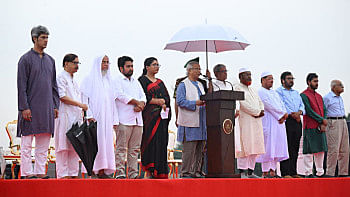
Comments